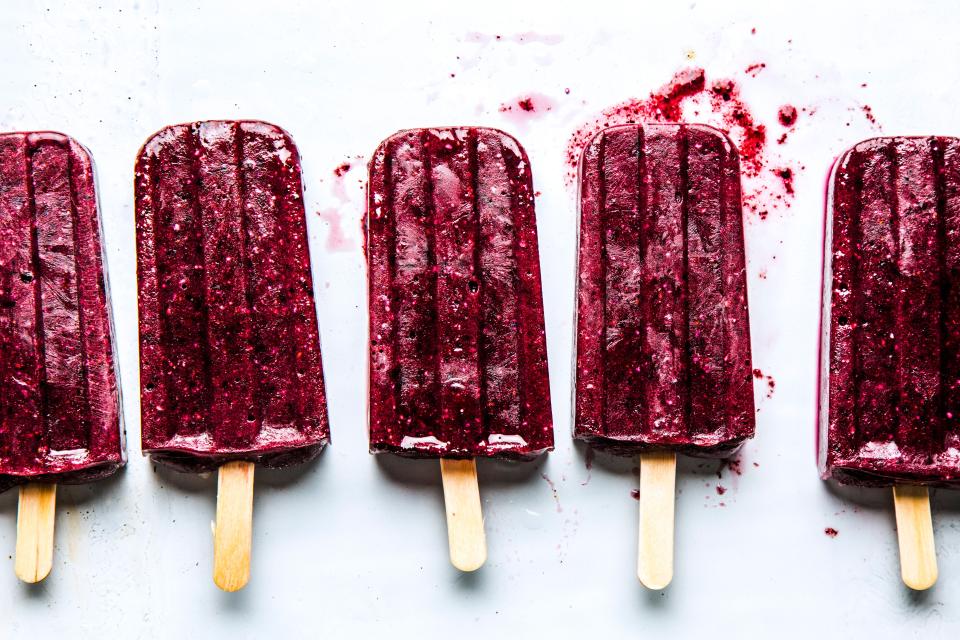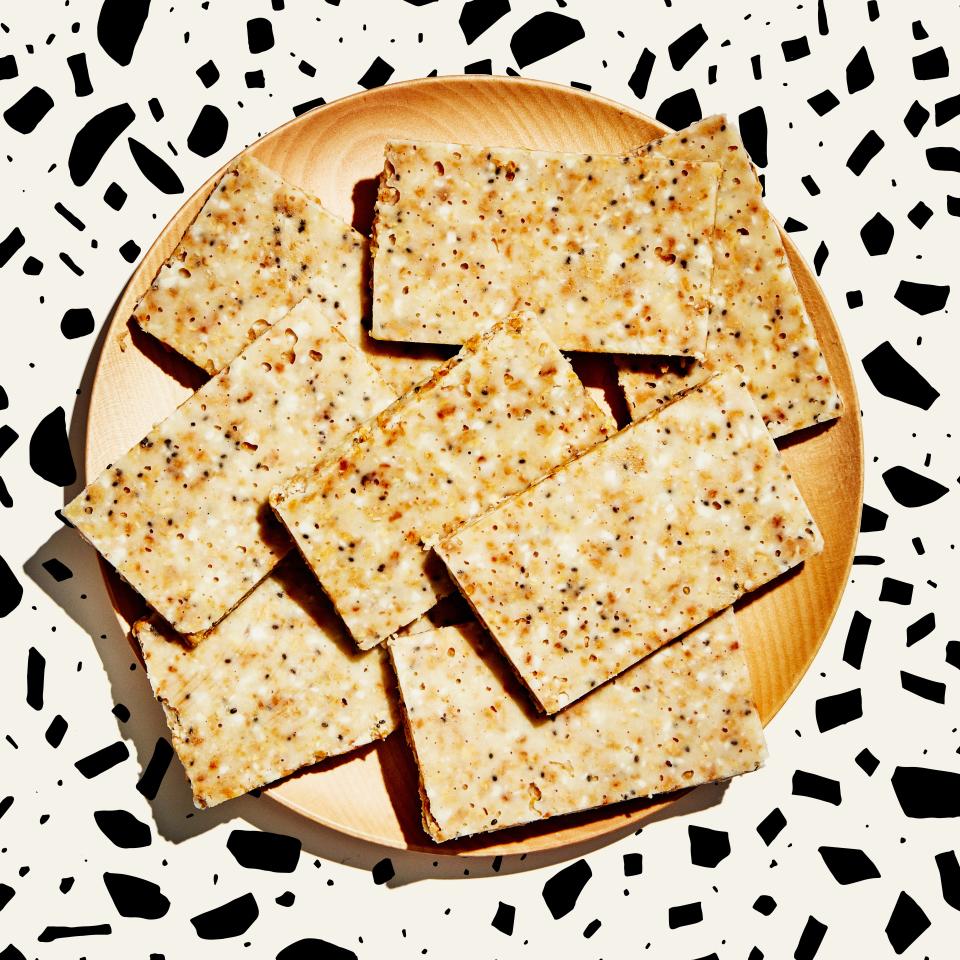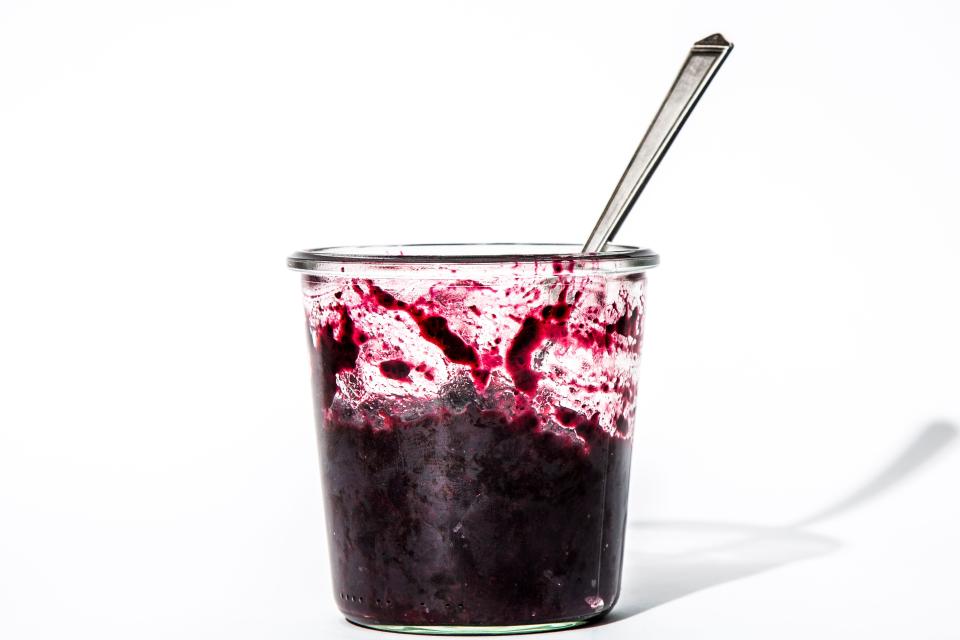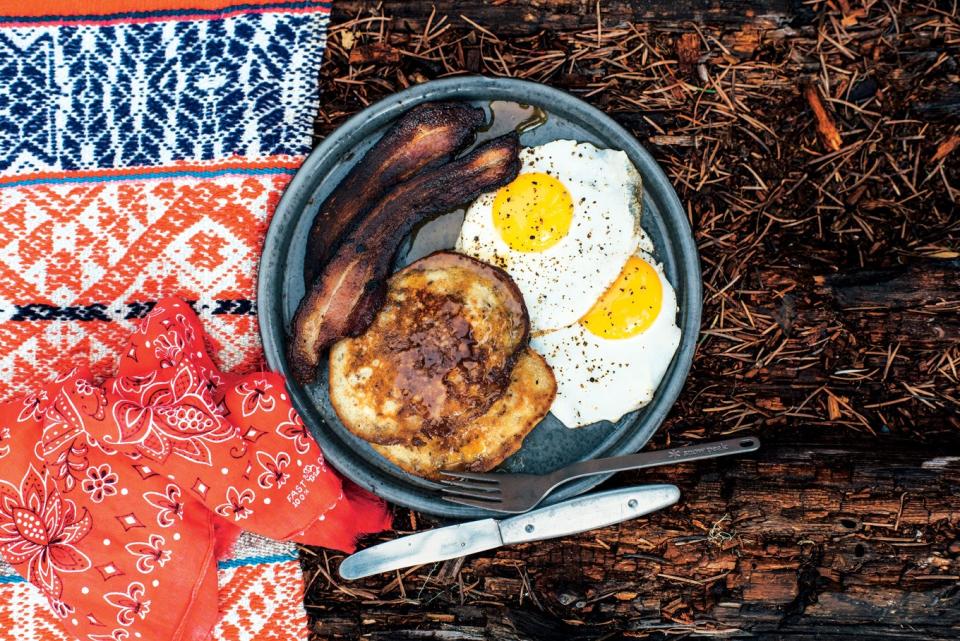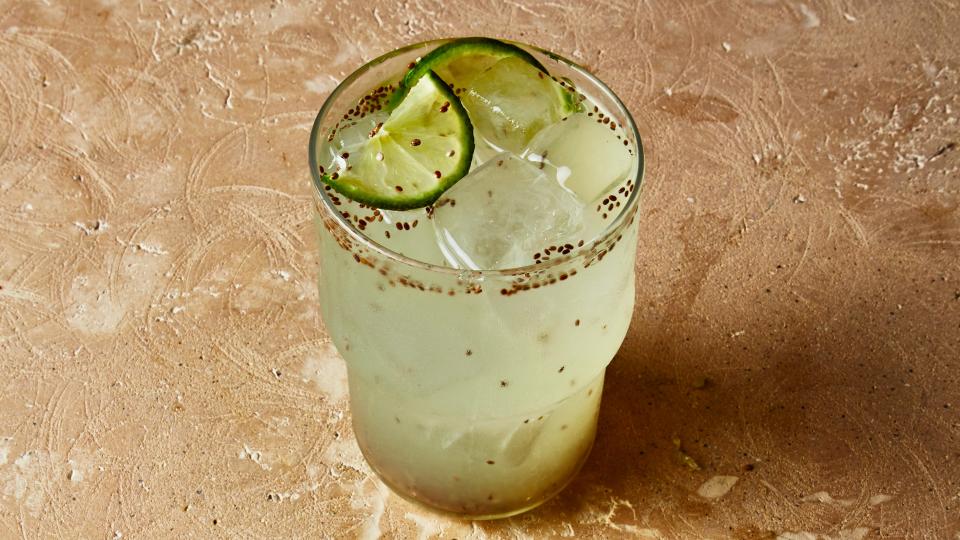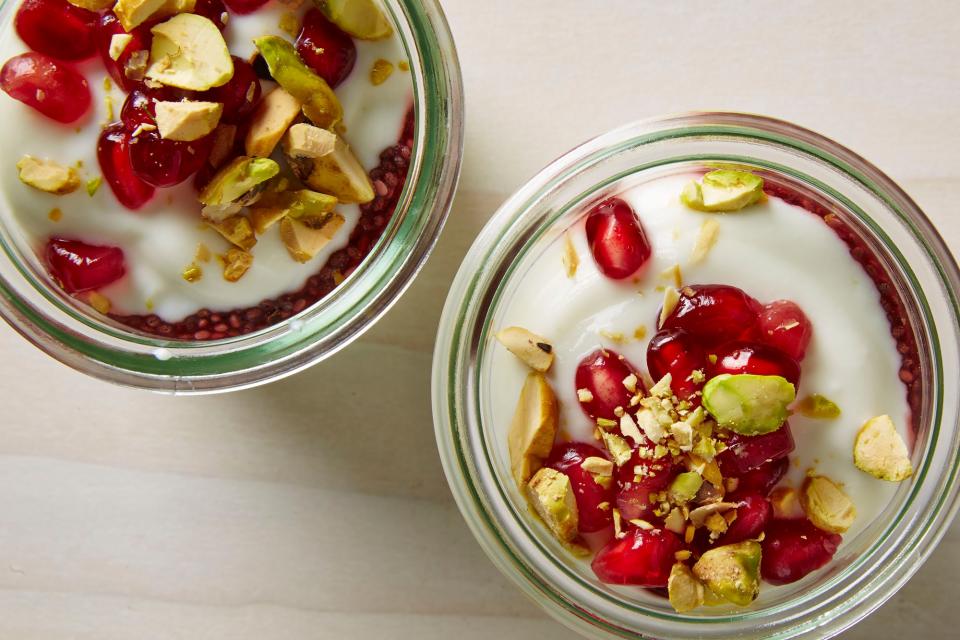Chia Seeds: Everything You Need to Know About This Powerhouse Superfood
Chia seeds used to be a niche ingredient you could only scout out at health food stores next to the flaxseed, hemp seeds, and spirulina. But chances are you can now find chia at your local grocery store, in everything from granolas and cereals to yogurts and energy drinks. You can find it at restaurants too: Chia pudding has become a mainstay at trendy cafés and luncheonettes coast-to-coast, including NYC's Dimes and L.A.'s Café Gratitude.
Want to enjoy them at home? Read on for everything you need to know about these energy-packed seeds (and yes, they're the same seed that powered the Chia Pets craze in the ’80s).
Where Do Chia Seeds Come From?
Chia seeds come from salvia hispanica, a flowering mint plant native to parts of Mexico and Guatemala. Chia seeds have only become a commercially popular health food in the last decade or so, but they're actually one of the oldest forms of nutrition and were a staple of Mayan and Aztec diets.
How to Eat Chia Seeds
Chia seeds have an extremely subtle flavor and are therefore prioritized for texture over taste. Their most obvious characteristic is that they absorb a shocking amount of liquid—up to 10 times their dry weight—swelling into miniature tapioca-like balls.
You can easily make chia seed pudding, one of the most popular ways to eat the seeds, by mixing a quarter cup of the seeds in one cup of liquid (almond milk and fruit juice are popular choices). Once the seeds have gelled up and the mixture is no longer watery, the "pudding" is ready to eat. This can take as little as 15 minutes, although chia pudding keeps well in the fridge for several days. Since chia doesn't have a ton of flavor on its own, feel free to add spices, chopped fruit, nuts, and any other toppings you'd like.
Dry chia seeds can also be added whole or ground to smoothies and juices, mixed into yogurt and oatmeal, or sprinkled on top of a salad. If you're adding the seeds to a drink or a "wet" dish like porridge, they'll swell up slightly while you eat but retain a slight crunch.
Chia seeds can also be used in tonics, jams, crackers, muffins, and grain bowls.
And although these are some of the more common ways to eat chia, its mild flavor and compact size make it easy to slip a spoonful into pretty much anything—so experiment!
Since chia seeds are capable of absorbing a lot of liquid, it's important to stay well-hydrated when consuming them, particularly in dry form. But you don't have to overdo it on the water—your daily eight 8-oz. glasses will suffice.
Chia Seeds: Benefits and Nutrition Facts
Chia seeds are often referred to as a superfood, which simply means they're relatively denser in nutrients compared to other foods. The small seeds hold the holy trinity of nutrition—fiber, protein, and omega-3 fatty acids—which promote slow digestion and a subsequently steady stream of energy.
Chia seeds also contain key minerals like calcium and magnesium. They also contain all nine essential amino acids, which are the muscle-building protein building blocks our bodies need but don't produce naturally—we have to get them through our food.
Chia seeds have around 140 calories per serving, which is two tablespoons or 28 grams. Each serving is packed with 4 grams of protein and 11 grams of fiber.
Chia seeds don't need to be ground before eating to get the nutritional benefits—eating them whole will have the same effect, and how you like to eat them is just a matter of personal preference. They're also naturally gluten-free and vegan.
Chia Seeds Shopping Guide
You can find chia at any Whole Foods Market, health food stores, and well-stocked grocery stores like Kroger and Vons. They’re also available from Amazon and Thrive Market. Some of the more widely available chia seed brands include The Chia Co., Nutiva, and Bob's Red Mill. Check the packaging if you want to buy seeds that are certified organic and non-GMO.
Look for seeds that are either a speckled black or white, but not uniformly brown. The Chia Co. founder John Foss explains brown chia seeds are immature seeds that haven't had a chance to mature properly, and this can result in fewer nutritional benefits and give the seeds a bitter taste.
How to Store Chia Seeds
Chia seeds have a long shelf life and will keep for several years when stored in a cool, dry place. Easy!
10 of Our Favorite Chia Seed Recipes
Now that you're all read up on the health benefits of chia seeds, it's time to choose some recipes that showcase this high-fiber wonder seed. Here are 10 of our favorites!
Coconut Chia-Tapioca Pudding
Blueberry-Chia Ice Pops
Tropical Energy Bars
Chia Pudding With Dried Apricots and Pineapple
Hazelnut Granola and Chia Pudding Bowls
Blueberry–Chia Seed Jam
Flaxseed–Chia Seed Pancakes with Bacon
Chia Limeade
Pomegranate–Chia Seed Yogurt Parfait
Originally Appeared on Bon Appétit

